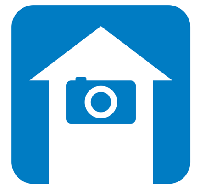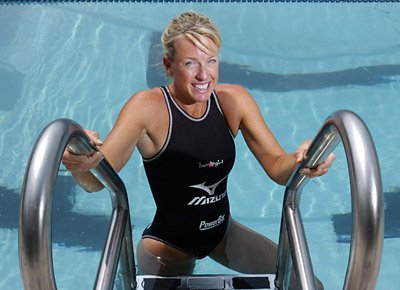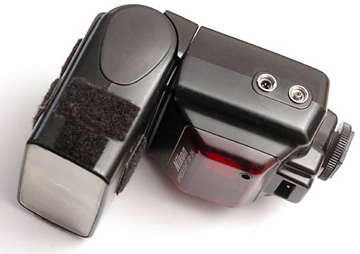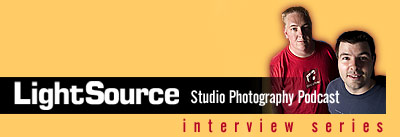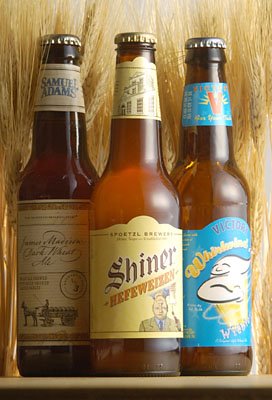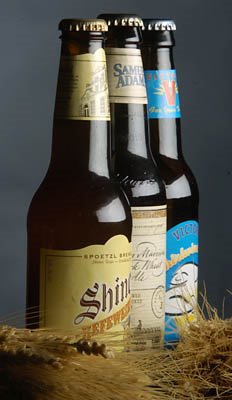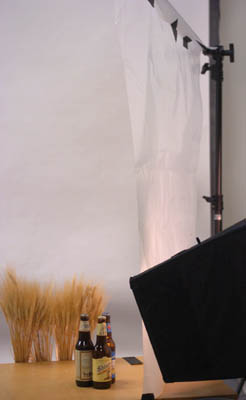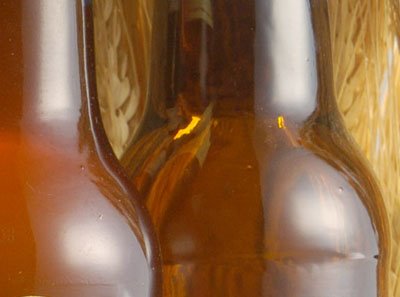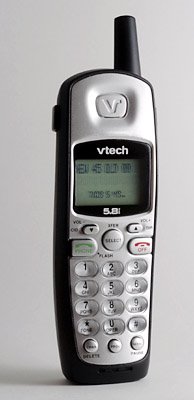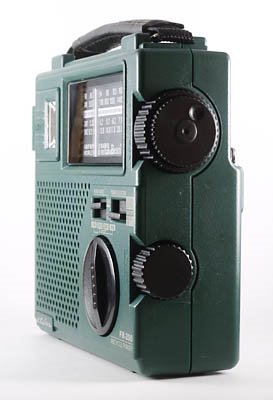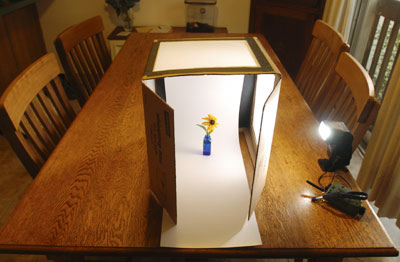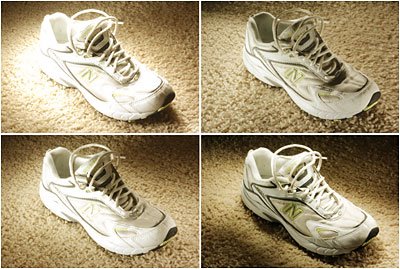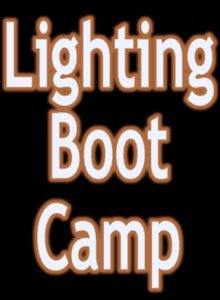
Okay, so you've got a headshot under your belt. It's a good start, and I hope it has provided the kick in the pants many of you needed to get up and actually start
doing some of this stuff.
The vast majority of you did quite well on the first assignment. And I think most of the misses can be attributed to aiming too high, as far as complexity of the photo was concerned.
The most important lessons to have gleaned from assignment #1 would be:
1) Show up with your best effort. Even on those little, "try-you-on-for-size" assignments.
2) Aim for the headshot sweet spot: Keep it simple enough to look great it runs tiny, but elegant enough to hold as a cover.
3) Don't wait until the last nanosecond to start your assignment. (heh, heh...)
Boot Camp assignment #2 will require just a little advance planning. It will make use of one of my very favorite back-pocket tricks, and I hope that you will find some value in the technique.
But before we get to the background assignment, I would like to give you a little background on finding (and using) a suitable collection of backgrounds. (Can you tell I am writing this after a long day at work?)
When we did the
sunset portrait in On Assignment, the idea was to think of a sunset as a unique, custom background delivered to you for free every evening.
But sunsets are unpredictable. The serendipity of an unpredictable sunset adds to its beauty, of course. But there are times when you need to know exactly what you are going to get. Sometimes sunsets just don't materialize very well. And many times they might not be appropriate for a particular assignment.
When most people think of setting up lights and shooting in front of a background, they tend to picture a photog in a studio, shooting in front of a big piece of paper. Savage is one of the most popular brands. I'll admit to having gone through quite a bit of "Savage Thunder Grey" in my day, before pretty much swearing off of the stuff.
I have nothing against paper backgrounds, per se. It's just that they are so, well,
boring. It just fits right in with that "lighting-is-something-you-do-in-a-studio" ethic that I have come to see as needlessly constricting and expensive. And the background paper itself ain't cheap, either.
About ten years ago, it occurred to me that there were literally
hundreds of much more interesting backgrounds within 30 minutes of my house, just waiting to be shot against. Not only were they free, but I didn't even have to find some way to store them when they were not being used.
After realizing that this resource was there for the exploiting, I began to look at many ordinary scenes in completely new ways. I began to shoot snapshots of brick walls, rock walls, old barns, public murals (I
love those) and many other interesting, varied, textured surfaces that eventually became my own little private collection of layers of interest for my future photos.
I keep them all in a little folder on my laptop. I give them coded filenames that tell me everything I need to remember about them.
For instance, a filename for a nice, textured building surface photo might be:
N_820CharlesBalt_PU.jpg
There's a lot of info there. First and most important, the "N" stands for "North," which is my favorite direction for the background to be facing. I am in the Northern hemisphere, so a north-facing wall is in shadow anytime of the day (as the sun arcs across the southern sky for me.) You Southern hemisphere folks will perfer the south-facing facades.
East and West facades are most useful in evening and morning, respectively, as they are in shadow during those times. Shadow/shade is useful because the light will be even. And it'll be knocked down a couple of stops, which makes lighting much easier with low-powered flashes. And, if you warm up your flash, the cooler-colored light in the shade on the background provides another layer of color contrast separation in the photo,
Next is "820CharlesBalt," which tells me the address and city. (This address is made-up, for you Baltimore readers. No headstart for you.)
Last is PU, which is short for "public" - easy access. "PR" would mean "private," which is fine, but that is just another permission hoop to jump through. Some backgrounds are worth it, though. And if you ask nicely, most owners are flattered.
This brings up the point of whether or not you have permission to shoot in a city locale. Big cities like New York, Paris, etc., (and even many second-tier cities) have permit requirements for shooting on public streets. While it is another layer of hassle, I
do not want to hear anyone moaning that they live in Paris/London/Tokyo/etc., and that this is a huge disagvantage.
You have
tons more choices that the rest of us, so quit your whining. Be creative. Use inconspicuous lighting gear. (Maybe have someone hold your small flash instead of using a stand.) Shoot early morning. Head to the suburbs, out of the city proper. Be adaptable to your limitations.
Once you start cataloging all that your city, town or rural environment has to offer you as a thinking, planning photographer, you will likely be amazed at the possibilities. And you will wonder why you hadn't been doing this all along.
So now that you have a cool background or 20, what are you going to do with it?
The easy way is to use one softened light and shoot one or two stops over the ambient. Late even or early morning gets you lower ambient (and easier overpowering) if you need it.
You'll have a few decisions to make. Hard light or soft? Close enough to the background to incorporate the subject's shadow - or not?
And, if you have the ability, one light or two?
This is where that second light can really pay off. Lighting your subject and the background separately can give you loads of control.
To visualize this, (and I actually want you to do that right now) think of the background light first. Place the light right behind your subject. They will conveniently block it from the camera's view, providing they are not Calista Flockhart or one of the 23-lb Olsen twins.
Now, with the light firing just to the cool background you found, you have created a silhouette of your subject. Even here, you have lots of possibilities. Warm colored background light? Cool? Even? Zoomed-in-center-hotspot? You get the idea. And that is before you have started to choose how you will define your subject with the other light.
And using just one light can get you some cool stuff, too. How far above the ambient will you shoot? Or will you let the flash light the background, too? What about a hard-angled, snooted light to bring out the texture of a subject directly against a rough background?
Remember that the ratio of the flash-to-subject distance to the flash-to-background distance will determine how bright the background is, compared to the subject. Total control, even not taking daylight into account. Read through some of the Lighting 101 posts on
balancing strobe if you need a refresher.
Want to completely nuke the daylight? Wait twelve hours after your little sunny problem and I
assure you that overpowering the ambient will not be a problem.
And night street lighting provides enough light to focus by, while being easy to completely overpower with small flash.
"But Dave, where are the examples? We need some
examples!"
Nope.
I am not trotting out five or six good idea just to have you guys ape one of them and not have to think on your own. That's kind of the whole point here.
Heck, I might even shoot this one myself. Haven't decided yet. (I
do have so much free time, you know...)
So, Phil Phlashen, here is your assignment:
Need editorial portait of Pat Coolwall.
Will run full page in magazine, so shoot vertical. Photo will run on a left-hand page, so assume that when composing. Please light it.
We have color on the page, so color is highly preferable, but not required. If you shoot black and white, you'd better "wow" us.
Framing can be anything from waist-up to full body. No tight headshots, please, as it will run full page. try for high impact, good lighting, strong engagement between the subject and the viewer. The reader should feel that they know something about Pat after seeing this photo.
As always, if in doubt, keep it simple.
Deadline is 7/16/06, 11:59pm your local time.
Tags are:
strobistbootcamp
background
amateur (or pro)
(your country)
I have set up a during-the-assignment discussion thread,
here.
I gave you a lot more info this time. And having seen the headshot process, you should have a good idea of what to expect.
Above all, have fun.
-DH
 A quick glance at the "Looksmart" entries thus far confirms that you early bird folks are really raising the bar on this assignment.
A quick glance at the "Looksmart" entries thus far confirms that you early bird folks are really raising the bar on this assignment.
